- Sonia Nayyar Patwardhan, the curator
and founder of Laasya Art gallery in Palo Alto, California, explores the
history and techniques of traditional Madhubani painting.
Art can provide
an important connection to our cultural heritage, and Indian art is simply rich
in traditions that date back hundreds and thousands of years. One of the most
popular traditional art forms is Madhubani painting, which claims roots in
Indian mythology and takes its name from its geographic origin in northern
Bihar.
Madhubani art — also known as Mithila art — is particularly special, with its unique use of local plants for colors, cow dung to treat the paper and bamboo sticks that serve as brushes, not to mention the beauty and simplicity of the paintings themselves. Here are more insights into the extraordinary history of traditional Madhubani painting and its fascinating process.
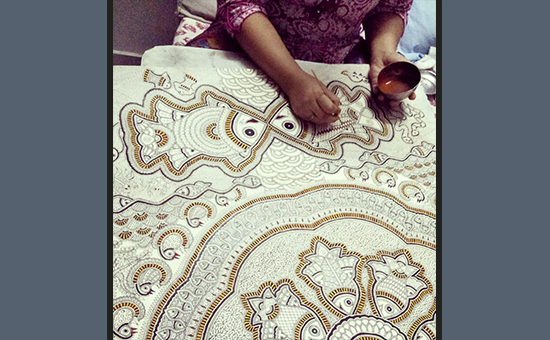 A Madhubani artist begins filling in her elaborate outline, a hallmark of this traditional art form.
A Madhubani artist begins filling in her elaborate outline, a hallmark of this traditional art form.
Origin of Traditional Madhubani
(Mithila) Art
Centuries ago, women first made Madhubani paintings on the freshly plastered walls and floors of mud huts. While its exact origin is unknown, legend holds that King Janak, the ruler of the Mithila region in the 8th or 7th century BCE, requested this new form of painting to capture his daughter Sita’s wedding to Prince Rama, the central figure of the epic Ramayana.
This technique was then passed down for generations, and now Madhubani
paintings are also made onto cloth, handmade paper and canvas. Although both
men and women paint in this style today, Madhubani stands out as an art form
historically developed and dominated by women.
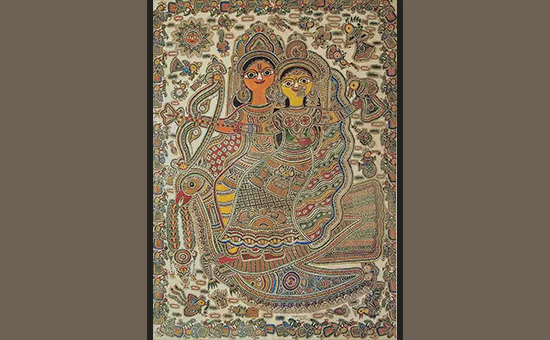 Mithila Art, Rati Kamdev (the goddess and god of love), Natural dyes on handmade paper, 30 x 22 inches.
Mithila Art, Rati Kamdev (the goddess and god of love), Natural dyes on handmade paper, 30 x 22 inches.
Main Themes in Madhubani (Mithila) Art
There are three
main themes in Madhubani art: religion, social scenes and elements of nature.
Religion - Hindu mythological figures and scenes from sacred texts are very common subjects, featuring popular deities like Radha and Krishna, Shiva, Ganesha, Saraswati and Laxmi.
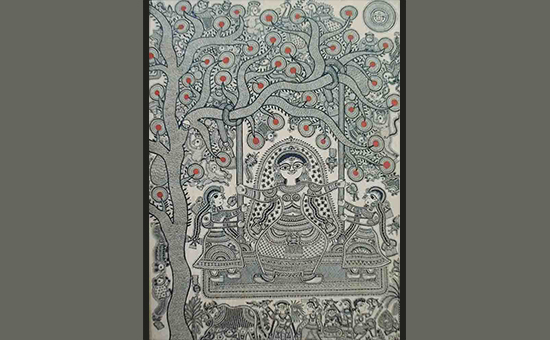 Mithila Art, Friends, Natural dyes on handmade paper, 60 x 36 inches.
Mithila Art, Friends, Natural dyes on handmade paper, 60 x 36 inches.
Social - From harvests and markets to the royal court and children playing, Madhubani painting beautifully renders scenes from daily rural Indian life. Wedding ceremonies are especially sought-after, with messages of love and fertility.
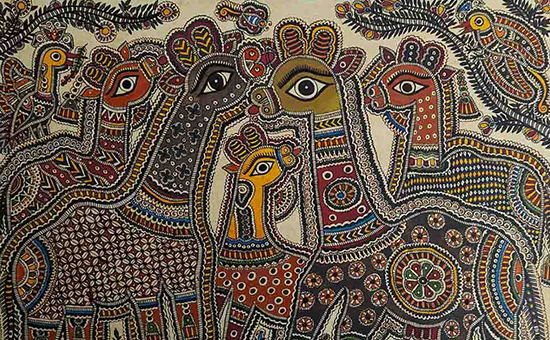 Mithila Art, Giraffe family, Natural dyes on handmade paper, 11 x 15 inches.
Mithila Art, Giraffe family, Natural dyes on handmade paper, 11 x 15 inches.
Naturre - The beauty and abundance of nature is an essential value of Madhubani paintings. Some of the most beloved images are the sun, the moon, birds and animals, the sacred Tulsi plant and Banyan trees.
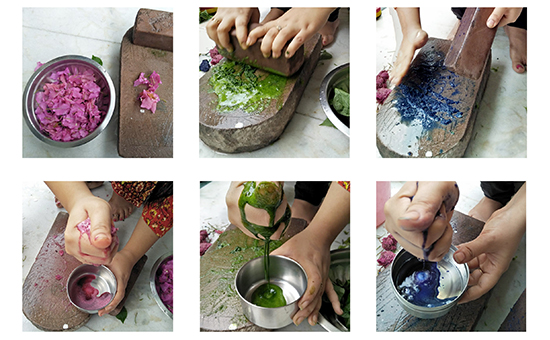 Madhubani paintings use only natural dyes, extracted from leaves and flowers.
Madhubani paintings use only natural dyes, extracted from leaves and flowers.
How are the natural
colors made?
Madhubani artists prepare their own paints and tools from natural, locally
available materials. From extracting juice from flowers to fashioning brushes
out of bamboo sticks, here are the basic steps of creating a Madhubani
painting:
Before applying any paints, the paper is treated with
cow dung to preserve the strong color of the natural pigments. Cow dung is also
mixed with charcoal and water for drawing the black outline.
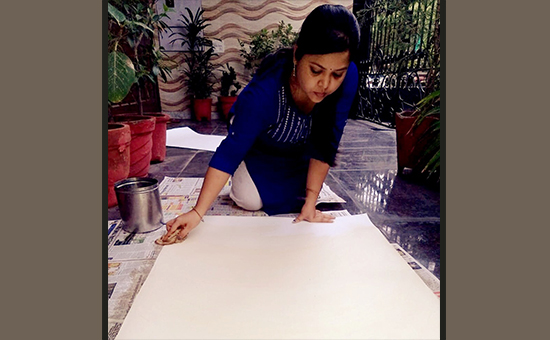 Cow
dung helps preserve the all-natural pigments used in Madhubani painting.
Cow
dung helps preserve the all-natural pigments used in Madhubani painting.
Then, the artist uses a bamboo stick for the
intricate black outline, which cannot be erased or changed once it is begun. This
black outline covers the entire paper, leaving hardly any blank space.
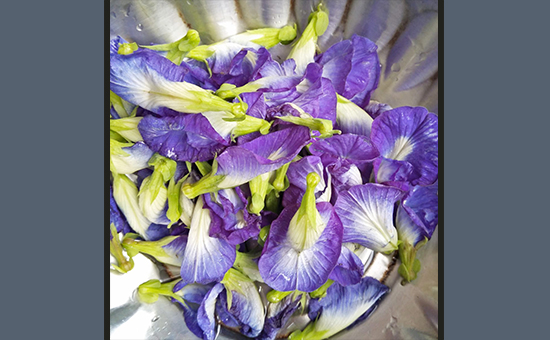 The juice from Aparajita flowers is used to make blue
color.
The juice from Aparajita flowers is used to make blue
color.
Finally, the artist manually prepares each color.
Some common ingredients include the aparajita flower for blue, bougainvillea
for pink, flat bean leaves for green, turmeric for yellow and rice powder for
white.
The Uncertain Future of Madhubani (Mithila) Art
As the world modernizes and it becomes increasingly difficult for traditional artisans to make a living from their craft alone, many ancient forms of Indian art are at risk of disappearing altogether. Unfortunately, Madhubani painting is no exception. Indian folk artists need support from collectors around the world in order to continue their customs, and that’s exactly why traditional Indian art is an important aspect of Laasya Art’s collection. We hope to encourage a new generation of appreciation for Madhubani paintings.
To learn more about traditional Indian art and how to keep these traditions alive,
I invite you to visit the website and blog of my gallery Laasya Art in
Palo Alto (San Francisco Bay Area).
-
Sonia Nayyar Patwardhan
DISCLAIMER AND
CREDITS: All images are reproduced here courtesy of the artists and Laasya Art
gallery, Palo Alto. They may not be reproduced elsewhere without written
permission from Laasya Art.
To read
all articles by author